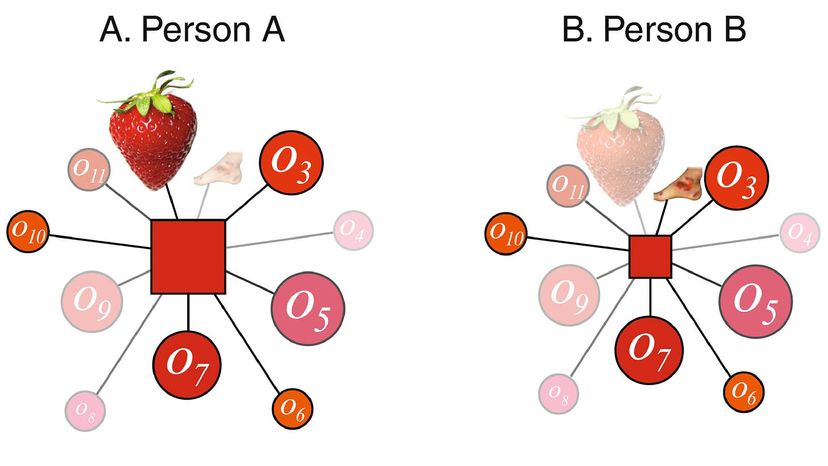Schloss and Palmer hypothesized that color preference is caused by how someone feels about objects of that color. "The idea is that if we bring to mind for you particular objects that are, say positive and associated a particular color or negative, we should be able to change your color preferences over the course of even a laboratory experiment."
To test this, they presented participants with objects associated with the colors red and green. One group saw positive red images like strawberries and roses, but also negative green images like vomit and mucous. The second group saw the opposite: negative red images such as lesions and positive green images like forests and kiwis.
Advertisem*nt
"What we found is that we were able to significantly increase people's preferences for the colors that were associated with the positive things they saw," Schloss explains. "If you saw positive red things, you could significantly increase your preference for the red colors, then if you saw positive green things."
For most people, Schloss says, the negative red things like lesions, are gross. However, she continues to say that some of the participants could have been pre-med. So things like lesions might be fascinating to this subset of people. Their next step was to see if they could predict how much a person's preference would change based on how much that person liked the images they saw. Turns out, they could.
"If you activate the associations of particular objects, that can have a larger influence on your preference for the color," says Schloss. By activating, she means reminding you that an object exists, basically bringing it to the top of your mind.
"Those [objects] are going to have more weight than the ones that I didn't activate," Schloss explains. For example, if participants saw positive images of red strawberries and not lesions, they were more likely to have a positive association with the color red.
This explains why a person may have positive or negative feelings about certain colors. It comes down to your experience with objects of those colors over time.

Young girls tend to gravitate toward pink and purple colors because they are often exposed to clothes, toys and television shows they enjoy that use these colors. On the flip side, when they see vomit and other disgusting substances in the yellowish-greenish hues, they'll be more apt to turn the other when they see those colors. In fact, yellowish-greenish colors are the least liked across the world, Schloss says. Turns out, vomit is pretty much the same color for everyone, and equally repulsive.
Advertisem*nt